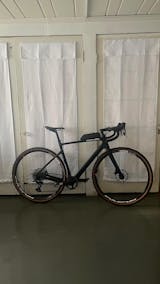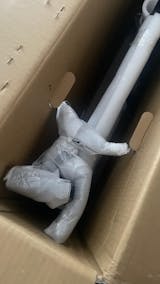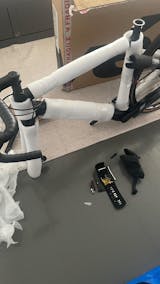
How to Optimize Your Cycling Position for a Faster Triathlon Race
Share
Introduction
In a triathlon, every second counts. While many athletes focus on training harder or buying lighter gear, one of the most effective ways to get faster is free: optimizing your cycling position. A proper setup not only boosts aerodynamics and power transfer but also saves energy for the run.
Whether you’re riding a brand-new bike or a quality used triathlon bike, the right position can make a huge difference in your performance. Let’s explore how to fine-tune your setup for speed, comfort, and efficiency.
Quick Checklist for a Faster Cycling Position
✅ Get a bike fit – A professional fit adjusts saddle height, handlebar reach, and aero bar setup for your body.
✅ Set saddle height correctly – At full extension, your knee should still have a slight bend. Too high = strain, too low = wasted power.
✅ Use aero bars effectively – Keep elbows tucked and body low to reduce drag.
✅ Flatten your back, relax your shoulders – Aerodynamics + comfort = faster over long distances.
✅ Strengthen your core – A stable core helps you hold aero position longer without pain.
✅ Train in your race position – Ride in aero during training so it feels natural on race day.
Mistakes That Cost You Speed
❌ Going too aggressive with your setup – comfort matters for endurance.
❌ Wrong saddle height – both too high and too low reduce efficiency.
❌ Ignoring flexibility – tight muscles make it harder to stay aero.
The Role of the Right Bike
Your bike’s geometry plays a huge role in how easy it is to hold an aerodynamic position. That’s why choosing the right triathlon bike matters.
💡 The good news? You don’t need to buy new. A well-maintained used triathlon bike can offer the same aerodynamic benefits at a much lower cost.
👉 Check out our selection of affordable used triathlon bikes—built for speed, comfort, and race-day success.
Conclusion
Optimizing your cycling position is one of the smartest ways to ride faster in your next triathlon. By focusing on aerodynamics, comfort, and consistency, you’ll improve your bike split without extra effort—and arrive at the run with more energy.
Whether you’re just starting out or chasing a new personal best, remember this: the right position matters as much as the right bike. And with a properly fitted used triathlon bike, you can achieve both—speed and savings.




